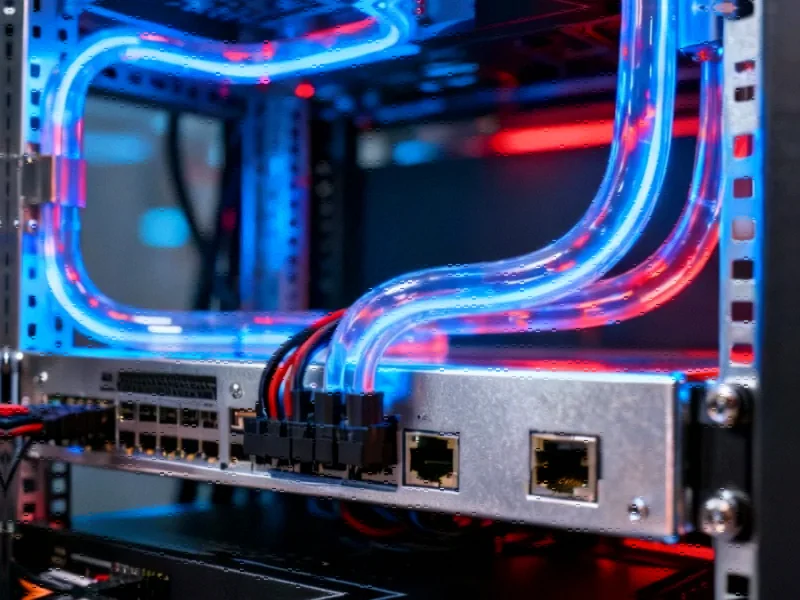AMD’s Vision for Open AI Infrastructure
At the recent 2025 Open Compute Project Global Summit, AMD unveiled its groundbreaking “Helios” rack-scale platform, marking a significant milestone in the evolution of artificial intelligence infrastructure. Built on Meta’s Open Rack Wide (ORW) standard, this double-wide framework represents a strategic shift toward open, interoperable data center solutions designed to address the escalating demands of modern AI workloads.
The timing of this announcement coincides with broader industry developments that are reshaping technology landscapes across multiple sectors. As organizations grapple with increasingly complex computational requirements, AMD’s approach to open infrastructure could set new precedents for how data centers are designed and operated.
Technical Specifications and Performance Capabilities
The “Helios” system leverages AMD’s most advanced hardware components, including Instinct MI450 GPUs based on the CDNA architecture, EPYC CPUs, and Pensando networking solutions. Each MI450 GPU delivers an impressive 432GB of high-bandwidth memory with 19.6TB/s of bandwidth, specifically engineered to handle data-intensive AI applications.
At full deployment, a single “Helios” rack equipped with 72 GPUs achieves staggering performance metrics: 1.4 exaFLOPS in FP8 precision and 2.9 exaFLOPS in FP4 precision. This computational power is supported by 31TB of HBM4 memory and 1.4PB/s of total bandwidth, with additional capabilities including 260TB/s of internal interconnect throughput and 43TB/s of Ethernet-based scaling capacity.
AMD claims these specifications represent up to 17.9 times higher performance than their previous generation and approximately 50% greater memory capacity and bandwidth compared to competing systems like Nvidia’s Vera Rubin platform. These advancements reflect the rapid pace of related innovations across the technology sector.
Open Standards and Industry Collaboration
The “Helios” platform incorporates multiple open standards, including OCP DC-MHS, UALink, and Ultra Ethernet Consortium frameworks, enabling both scale-up and scale-out deployment strategies. This commitment to openness extends from chip to rack level, potentially reducing vendor lock-in and increasing flexibility for enterprise customers.
Meta’s contribution of the ORW specification to the OCP community establishes a foundation for large-scale AI data centers, though questions remain about the standard’s neutrality given the involvement of major technology corporations. The collaboration between AMD and Meta signals a meaningful departure from proprietary systems, potentially influencing market trends in infrastructure development.
Oracle’s commitment to deploy 50,000 AMD GPUs provides early validation of commercial interest, though widespread ecosystem adoption will ultimately determine whether “Helios” becomes a genuine industry standard or remains another branded interpretation of open infrastructure.
Cooling and Serviceability Innovations
The “Helios” design prioritizes operational efficiency through advanced liquid cooling systems and standards-based Ethernet implementation. These features address critical challenges in power density and thermal management that have become increasingly problematic in AI-optimized data centers.
The focus on serviceability reflects growing recognition that maintenance and upgradability are as important as raw performance in sustainable infrastructure design. This approach aligns with broader recent technology trends emphasizing long-term operational efficiency.
Industry Implications and Future Outlook
Forrest Norrod, AMD’s executive vice president and general manager of Data Center Solutions Group, emphasized that “open collaboration is key to scaling AI efficiently.” He added that with “Helios,” AMD is “turning open standards into real, deployable systems – combining AMD Instinct GPUs, EPYC CPUs, and open fabrics to give the industry a flexible, high-performance platform built for the next generation of AI workloads.”
As AMD targets 2026 for volume rollout, the industry will closely watch how competitors and partners respond to the ORW standard. The success of this initiative will reveal whether openness in AI hardware can transition from conceptual framework to practical implementation. For those seeking comprehensive analysis of this development, AMD’s Helios AI platform emerges as open compute contender provides additional context and expert perspective.
The “Helios” platform represents more than just another hardware announcement—it embodies a strategic vision for how AI infrastructure might evolve in an increasingly interconnected computational landscape. As organizations prepare for the next wave of AI innovation, the principles of openness, interoperability, and serviceability demonstrated by “Helios” could become defining characteristics of successful data center architectures.
This article aggregates information from publicly available sources. All trademarks and copyrights belong to their respective owners.
Note: Featured image is for illustrative purposes only and does not represent any specific product, service, or entity mentioned in this article.



